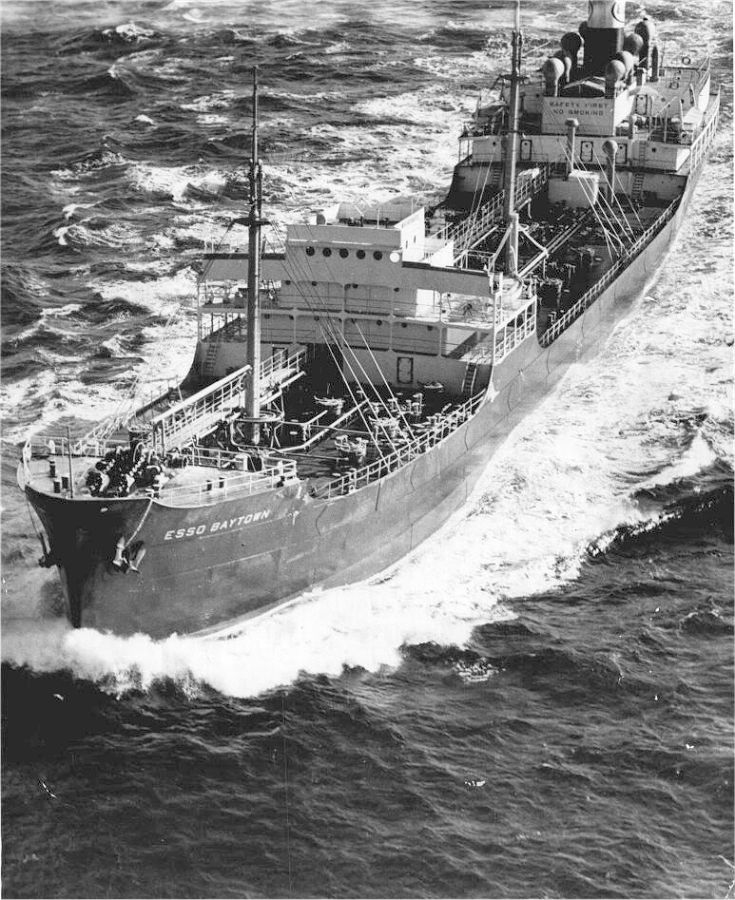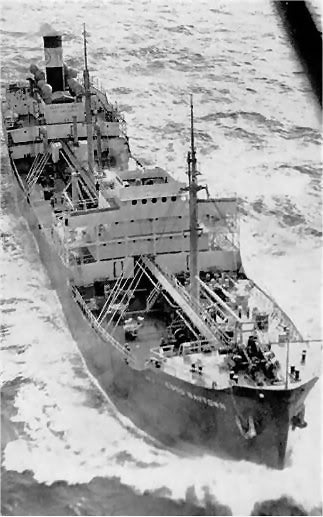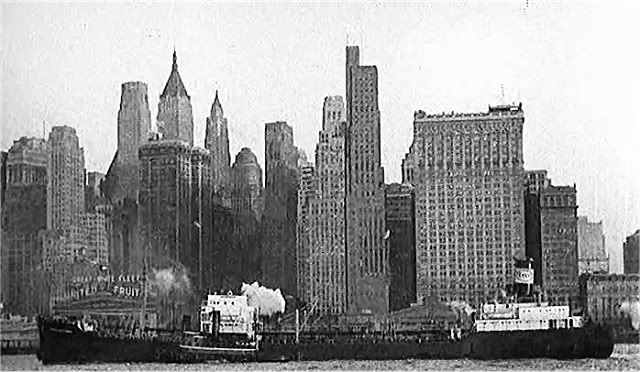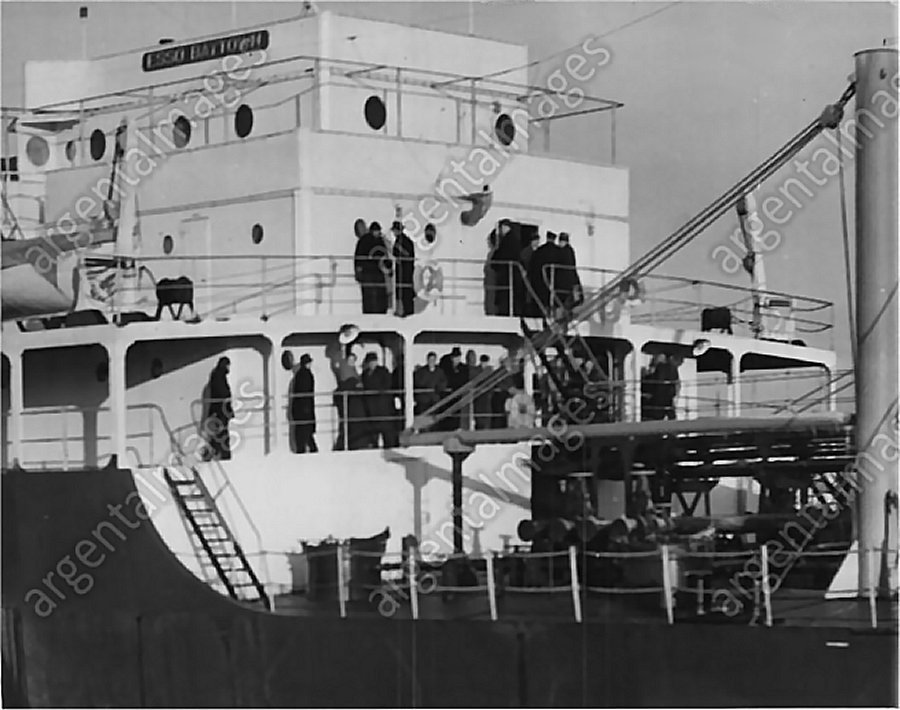Auke Visser's International Esso Tankers site | home
BRINGING IN SURVIVORS OF "CAVALlER"
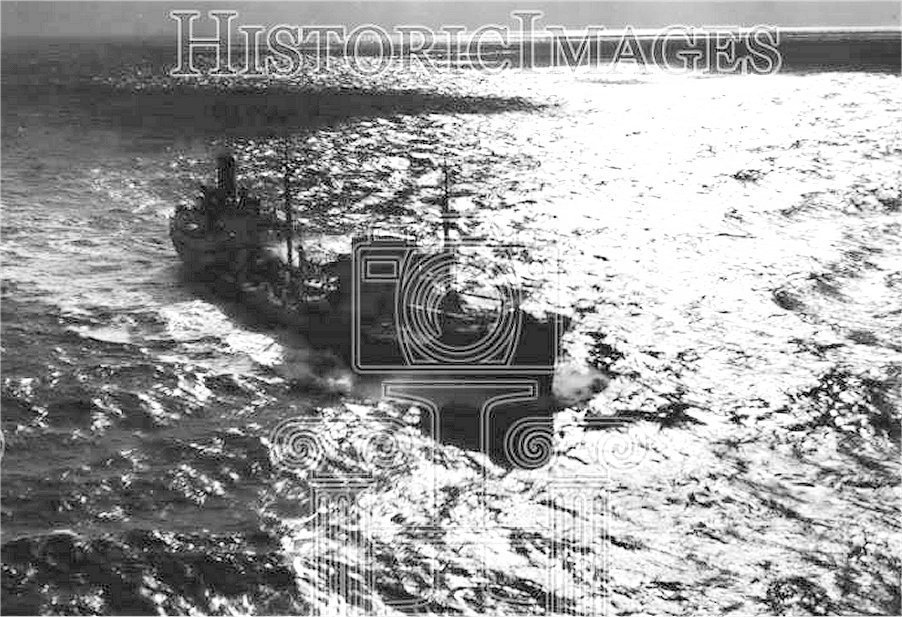
"Esso Baytown" at sea off NJ coast.
( International News Photo )
Text with photo :
RESCUE SHIP COMES IN.
Ploughing through heavy seas, the oil tanker "Esso Baytown", is seen about 60 miles off the New Jersey coast, making for New York with 10 survivors of the flying-boat "Cavalier", fished from the water afterfloating in open sea for hours. A morning sun shone on the choppy seas in this closing scene of a tragic saga of the air and the sea.
February 5th 1939.
|
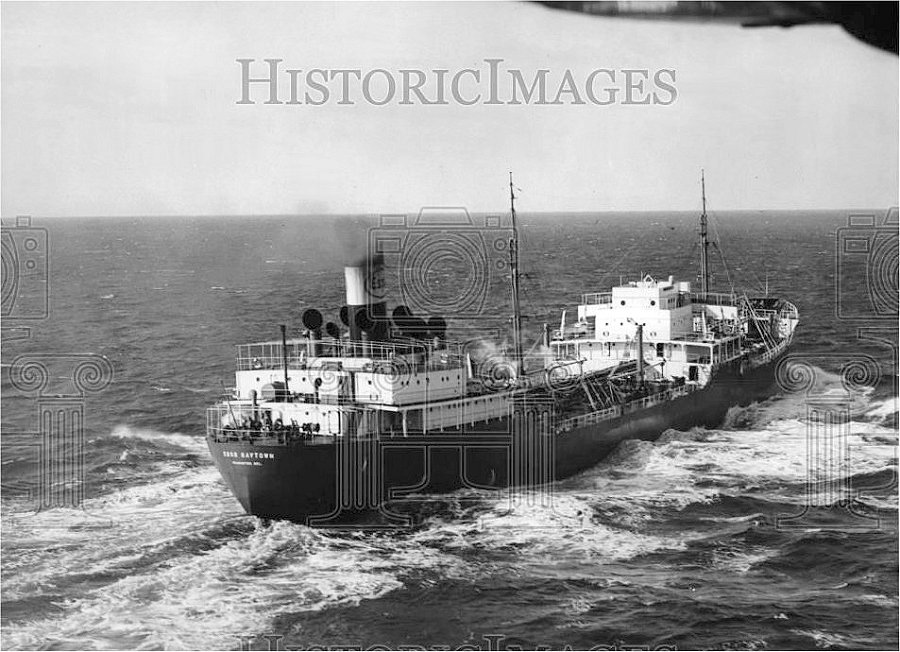
"Esso Bayway".
( International News Photo )
Text with photo :
BRINGING IN SURVIVORS OF 'CAVALlER'
SEA GIRT, N.J. - THE STANDARD OIL TANKER ESS0 BAYTOWN IS SHOWN IN THIS EXCELLENT AERIAL PHOTO AS SHE PLOWED TOWARDS NEW YORK TODAY WITH THE 10 SURVIVORS OF THE
TRAGEDY THAT BEFEL THE IMPERIAL AIRWAYS, N.Y. - BERMUDA FLYING BOAT CAVALIER ON SATURDAY. THE ESSO BAYTOWN; COMMANDED BY CAPTAIN FRANK SPURR PICKED UP TEN OF
THE THIRTEEN PEROONS ABOARD THE ILL-FATED PLANE AFTER THEY HAD BEEN TEN HOURS IN THE WATER ABOUT 175 MILES OFF CAPE MAY, N.J.
THIS PHOTO WAS MADE
AS THE TANKER PASSED A POINT ABOUT 45 MILES OFF SEA GIRT, N.J.
|
"Esso Baytown".
( International News Photo )
"Esso Baytown".
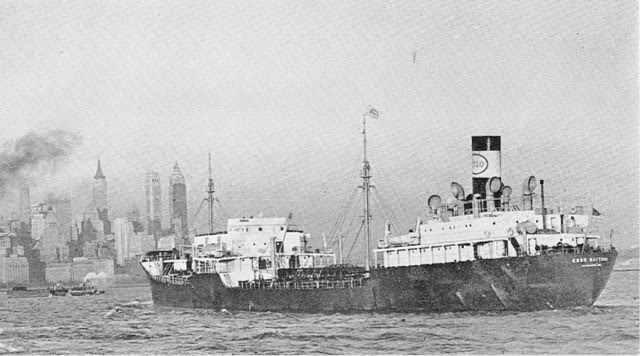
"Esso Baytown" arriving in New York with survivors of the passenger seaplane "Cavalier".
"Esso Baytown" arriving in New York with survivors of the passenger seaplane "Cavalier".
"Esso Baytown" arriving in New York with survivors of the passenger seaplane "Cavalier".
Text with photo :
CAVALIER SURVIVORS REACH PORT
Survivors or the Illfated Flying boat Cavalier are show on the deck of the rescue tanker Esso Baytown Jan. 23rd as a Coast Guard Cutter hove alongside in New York Harbor to take the 10 man and women to the city. They were to be taken to Manhattan hos
pitals forn treatment.
|
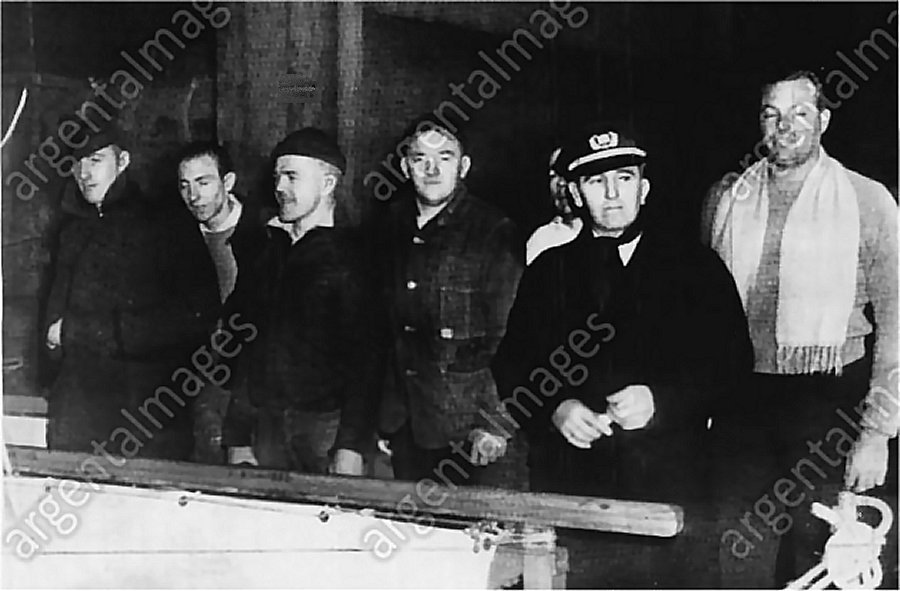
"Esso Baytown" arriving in New York with survivors of the passenger seaplane "Cavalier".
Text with photo :
Crew of the rescue tanker Esso Baytown, left to right, StanleyTaylor of Boston, John P. Goodwin, Tom Brady, John Yumanscheck, Howel Smith and Chief-officer O. Anderson.
|
Text with other photos :
Source : Internatioal News Photo
From The Canberra Times, Monday 23 January 1939.
Disastrous Flight to Bermuda
DRAMATIC RESCUE BY OIL TANKER, NEW YORK, Saturday.
Disaster marked the flight of the Bermuda bound Empire flying boat Cavalier, which was forced, owing, to engine trouble due to ice accumulation in bad weather, to land on the Atlantic, midway between New York and Bermuda, this afternoon. After reporting a safe landing the radio officer detailed a starkly dramatic story of the fight to keep the plane afloat, with one ominous final word, "Sinking."
During the night, 10 hours after the machine had landed, the Standard Oil Company's tanker, Esso Baytown, shortly before midnight, picked up ten survivors of the 13 persons who were on board the Cavalier; they had clung to,rubber lifebelts. The remaining three are believed to have been drowned.
Searching the turbulent seas, using searchlights, the tanker Esso Baytown, shortly before midnight picker up ten survivors, who indicate that the plane sank 10 minutes after landing.
The master of the tanker radioed when he reached the position indicated by the plane's SOS, that he heard voices crying in the darkness. A boat was launched and the survivors were take on board.
They were suffering severely from exposure and shock.
The banker made a call for medical aid and the gunboat Erie arrived at 1 a.m., but vainly tried for three hours to get a doctor aboard. Later a coastguard cutter was successful.
A number of aircraft, eight coastguard cutters, two steamships, two British destroyers, an American gunboat and Vincent Astor's yacht also raced to the rescue.
One aeroplane and a steamship reached the scene at nightfall but did not find the machine or the survivors. It is feared that the hull was damaged in'landing on the rough sea.
Imperial Airways officials state that the cabin seating accommodation could be converted into light rafts.
Pilots throughout the night reported hazardous conditions owing to ice forming on the wings.
The Cavalier's path to disaster is recorded in the following terse messages by radio:
12 23 p.m. Running into bad weather. May have to land.
12.37 Still in bad weather.
12.57 S.O.S.
12.59 All engines failing. Ice at 1,500 feet.
1.7 Still have two motors going. Trying to get others started.
1.11 Landing now.
1.12 Landed O.K. Switch off. Stand by.
1.13 Sinking.
No further messages were received.
It is presumed that ice in the carburretor caused failure of the engines.
The fistt rjescue plane was at the scene by 6 p.m. and found nothing.
The Cavalier was engaged on the New York-Bermuda service since 1937. Her veteran captain, M. Roland Anderson, flew on the London to Australia service until April.
Others in the all British crew were: First Officer, Neil Richardson, Radio Officer, Patrick Chapman; Robert Spence and David Williams, stewards.
The passengers comprised five women and three men, five Americans and three Bermudans.
The Americans include the head of the N.Y.K. Auction Company, J. Cordy Noakes, and his wife. Hews recently was honoured by the Trans Continental Air Line, for having travelled 100,000 miles in its planes.
His wife was making her first flight.
Those feared drowned are Noakes and Donald Miller, and Spence, a steward.
The survivors state, that the missing men let go their hold on the lifebelts. Noakes and Miller were both travelling with their wives.
The tanker is heading for port at full speed.
From The Canberra Times, Tuesday 24 January 1939.
ICE IN CARBURETOR
Cause of Plane Disaster
MIRACULOUS RESCUE BY TANKER, NEW YORK. Monday,
A storm is delaying the tanker, Esso Baytown, which is making towards New York with 10 survivors from the Imperial Airways flying boat, Cavalier, which came down and sank between New York and Bermuda yesterday, with the loss of three lives.
The vessel is expected to reach New York, at 10 o'clock to morrow morning.
The captain of the flying boat Anderson, is reported to be critically hurt. The tanker's crew is also suffering from exposure and injury.
The first boat lowered overturned, and a second boat rescued the seamen. It then made the journey through heavy seas to a group, of half-frozen men and women, who had been,drifting for 10 hours.
The survivors told the officers of the tanker that the engines failed owing to the carburetor icing up.
The landing was so rough that the occupants were hurled against the walls of the plane and the seats. Several were injured. All the metal in the hull was apparently stripped by the force of the impact with the water
and the plane sank so fast that they had,hardly time, to get out. Working heroically the crew released the passengers, through the emergency doors.
Mrs. Noakes said that the crew saw her husband with his head gashed and bleeding. He was struggling to hold a lifebelt which he was unable to fasten on. She tried to reach him, but he lost his grip and sank.
Robert Spence, the steward of the plane, who is among the three missing, was also injured in the landing.
Throughout the afternoon the survivors floated in a close group scanning the horizon for a rescue ship.
After dark the Esso Baytown was observed, but passed on. The survivors saw the vessel's lights and screamed frantically. Some of the men started to swim to the lights.
The tanker later obtained the true position of the Cavalier at its last report and circled back.
Aviators considered the rescue miraculous, as it was the first, rescue in history from a commercial aircraft forced down in the sea.
From The Canberra Times, Wednesday 25 January 1939.
TANKER REACHES PORT
Wild Disorders at Wharf, NEW YORK, Tuesday,
Wild scenes of disorder marked the arrival of the tanker, Esso Baytown, with survivors of the air crash.
The crowd fought the police, calling on the captain, "Tell your story". A telegraph boy was crushed under the gangway and severely injured.
The police finally gave up efforts of control, as 1500 men and women swept aboard. Taking possession of the tanker they raced through the passageways, ripped open cabin doors and invaded the engine room seeking souvenirs.
The survivors paid tribute to the heroism of Spence, who was injured, and without a lifebelt swam, up and down encouraging and rubbing stiff muscles until he slipped from sight.
|
